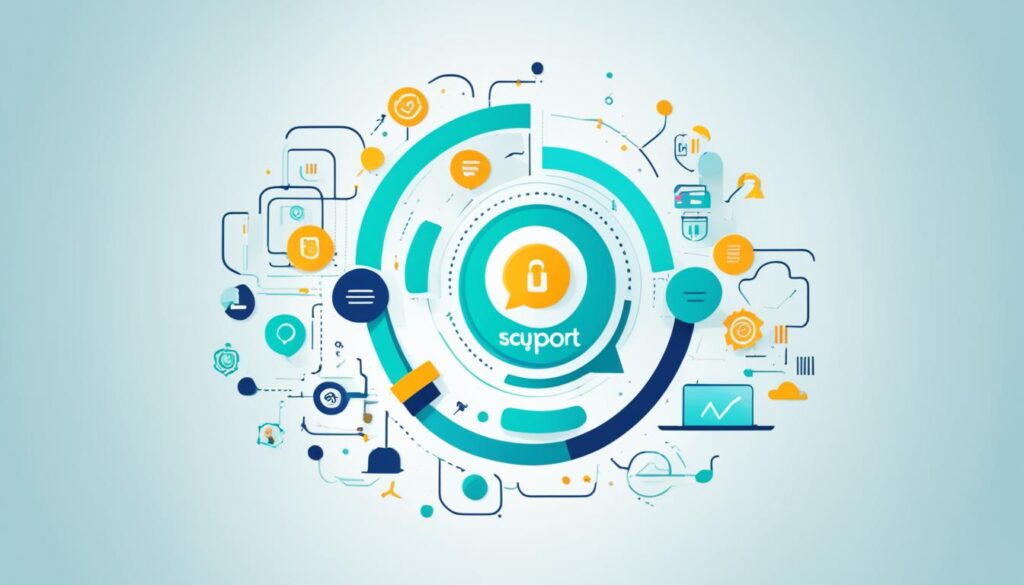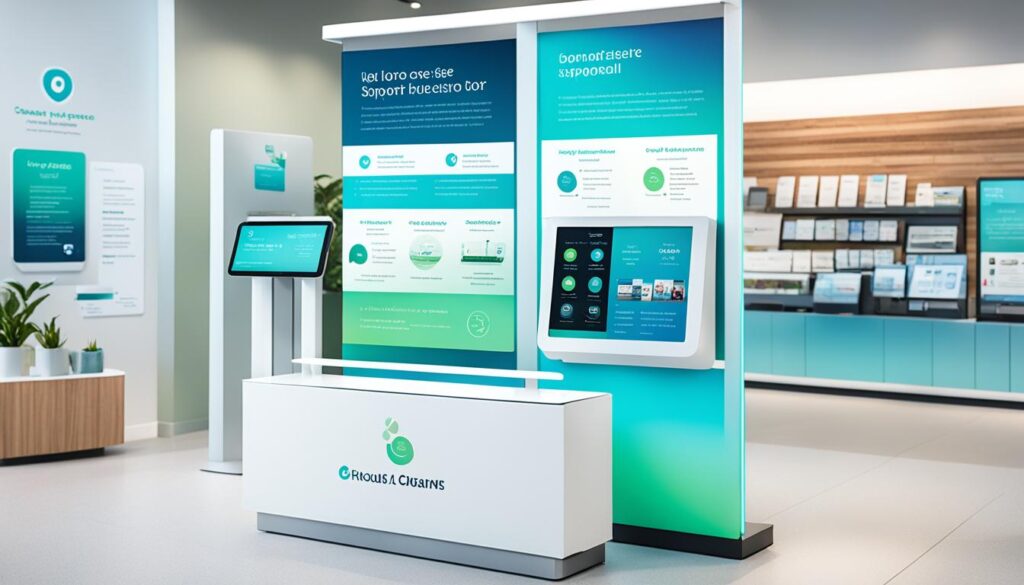Self-service support is no longer just an option for companies—it’s essential for boosting efficiency and customer satisfaction. In today’s fast-paced digital world, customers expect instant solutions to their problems. By providing self-service support options, companies can meet these expectations while reducing the workload for their support teams.
According to the Zendesk Customer Experience Trends Report, 69% of customers prefer to resolve their own issues using self-service options. This makes sense considering self-service support allows customers to find quick answers to simple questions without having to wait for assistance from an agent.
Automated support services, powered by artificial intelligence (AI), have transformed self-service support. From knowledge base management to chatbot support, there are various self-help support tools and customer service software that can provide efficient and personalized assistance to customers. These AI-powered support systems enable companies to scale their support operations without sacrificing quality.
However, it’s important to note that self-service should not completely replace human support. Instead, it should work in harmony with support agents to provide a seamless service experience. Some issues are complex or require a personal touch, and having knowledgeable agents available to assist customers is crucial in these situations.
In the following sections, we’ll explore why customers prefer self-service support, when they rely on live assistance, and provide examples of self-service solutions that can benefit customer service teams. We’ll also delve into self-service IT and its benefits. By understanding the importance of self-service and implementing the right strategies, companies can enhance their customer support and ultimately increase customer loyalty and satisfaction.
Solving for Speed and Complexity
When it comes to customer support, speed and complexity play a crucial role in determining the most suitable channel for issue resolution. According to the Zendesk Customer Experience Trends Report, 50% of customers choose a channel based on the speed they need a response, while 40% consider the complexity of their issue. Understanding these customer preferences is essential for businesses to optimize their self-service support and agent-assisted customer service teams.
Self-service support is particularly well-suited for customers with simple queries who prioritize a fast response. By leveraging automated support services, AI-powered support systems, and self-help support tools, customers can quickly find the information they need, eliminating the need to wait for a support agent’s assistance.
However, for more complex issues that require in-depth knowledge or personalized guidance, live assistance from agents is often the preferred choice. Customer service teams, armed with customer service software and equipped with the necessary expertise, can efficiently address customers’ complex challenges and provide tailored solutions.
“Customer expectations are evolving, and businesses need to adapt accordingly. Finding the right balance between self-service support and agent-assisted service is key to delivering a seamless customer experience.”
Zendesk Customer Experience Trends Report – Key Findings
| | Percentage |
|————————|——————-|
| Customers choosing a channel based on speed | 50% |
| Customers choosing a channel based on complexity | 40% |
By being mindful of customer preferences for speed and complexity, businesses can optimize their support strategies and leverage the strengths of both self-service support and agents. A well-rounded customer support approach ensures that customers receive efficient and effective resolutions while maintaining a high level of satisfaction.

Next Steps: Striking a Balance
To provide an exceptional customer experience, businesses should assess their support infrastructure and explore how self-service support and agent-assisted service can complement each other. By leveraging customer data, feedback, and insights, organizations can fine-tune their support offerings and deliver the right solution at the right time.
When Customers Prefer Self-Service
Many customers prefer to use self-service options for various reasons. According to a Microsoft report, 86% of customers expect a self-service option. Some scenarios where customers may opt for self-service include:
- Quick answers: When customers have simple queries or need immediate information, self-service options allow them to find answers quickly without having to wait for assistance from a support agent.
- Avoiding wait times: Self-service support enables customers to bypass queues and wait times associated with contacting customer support via phone or chat. They can access information and resolve issues at their convenience.
- After hours support: Not all customer issues occur within regular business hours. Self-service options provide customers with the flexibility to find solutions to their problems even when support teams are unavailable.
By offering robust self-service support, companies can meet customer preferences and provide timely assistance for common issues. This empowers customers to take control of their support experience and frees up support agents to focus on more complex and specialized customer needs.

When Customers Rely on Live Assistance
While self-service is preferred by many customers, there are situations where they may rely on live assistance. Some scenarios where customers may turn to phone, chat, or messaging support with a live agent include:
- Urgent Issues: When customers encounter urgent problems that require immediate resolution, they often seek live assistance to receive prompt and personalized support.
- Complex Issues: Certain issues may be too intricate or technical for customers to resolve on their own. In such cases, accessing live assistance ensures they receive the expertise needed to address complex challenges effectively.
- Access to Technology: Despite the availability of self-service options, some customers may lack the necessary access or familiarity with technology to utilize them effectively. In these instances, live assistance offers a viable alternative for obtaining the required support.
“Live assistance provides a vital lifeline for customers facing urgent or complex issues, as well as those lacking technology access or expertise.”

In situations where self-service tools may not suffice, customers can rely on live assistance to receive immediate, personalized support for urgent, complex, or technology-related issues.
Three Helpful Self-Service Examples for Customer Service Teams
Customer service teams can greatly enhance the customer experience by implementing various self-service solutions. These self-service options empower customers to find answers and solutions on their own, reducing the need for direct interaction with support agents. Let’s explore three effective self-service examples:
1. Chatbots:
Chatbots are AI-powered virtual assistants designed to simulate human conversations. They can handle common queries, provide instant responses, and guide customers through self-help resources. Chatbots enable self-service support by offering quick and accurate information, automating repetitive tasks, and escalating complex issues to live agents when necessary. According to Gartner research, by 2023, 25% of customer service and support operations will integrate virtual customer assistants or chatbot technology across engagement channels, up from less than 2% in 2019.
2. Help Centers:
A help center is a centralized online resource that hosts a variety of self-help materials and information, such as FAQs, knowledge bases, video tutorials, and user guides. Help centers provide customers with a self-service hub where they can access relevant information at their convenience. They enable customers to troubleshoot problems, learn about product features, and navigate through common issues independently. By leveraging AI technologies, help centers can also offer intelligent recommendations based on customer preferences and behavior, increasing the effectiveness of self-service support.
3. Communities:
Online communities, such as forums or discussion boards, encourage customers to connect with each other and share their experiences, insights, and solutions. These communities provide a platform for customers to seek help from peers, exchange tips, and collaborate on solving challenges. By fostering a sense of community and collective knowledge, customer service teams can tap into the power of crowd-sourced support. Engaging in communities can also lead to valuable feedback and ideas for improving products or services. According to Gartner research, customer communities can reduce the number of support requests by deflecting up to 10% to 20% of cases through peer support.

Implementing these self-service examples allows customer service teams to provide efficient and accessible support, empowering customers to find the information they need quickly and independently. This not only reduces the workload for support agents but also enhances the overall customer experience.
Summary Table: Self-Service Examples
| Self-Service Example | Benefits |
|---|---|
| Chatbots |
|
| Help Centers |
|
| Communities |
|
The Benefits of Self-Service IT
Self-service IT goes beyond basic help desk functions. It can empower employees to resolve a wide range of IT issues on their own. By implementing self-service IT solutions, companies can experience several key benefits:
- Increased efficiency: Self-service IT enables employees to quickly and independently address their IT needs, reducing dependency on IT support teams and minimizing response times.
- Cost savings: By allowing employees to handle routine IT requests themselves, companies can optimize resource allocation, reduce the need for additional IT staff, and save on support costs.
- Reduced shadow IT: Self-service IT provides employees with accessible and approved ways to solve their IT problems, reducing the risk of unauthorized and potentially insecure technologies being used within the organization.
- Automation: AI-enhanced self-service IT can automate repetitive tasks and processes, freeing up IT teams to focus on more complex issues and strategic initiatives.
- Knowledge sharing: Self-service IT platforms often include knowledge bases and expert centers, allowing employees to access relevant information and guidance, fostering knowledge sharing and empowering users to resolve issues independently.
The Importance of Self-Service in Customer Support
Self-service support is a cost-effective solution for businesses that not only meets customer expectations but also provides faster resolutions to issues. By offering self-service options, businesses can improve customer satisfaction, loyalty, and ultimately save time and resources for both customers and support teams.
One of the key advantages of self-service support is its availability. Customers can access self-service options 24/7, allowing them to find answers and solutions whenever they need them. Knowledge bases, FAQs, and other self-help tools are easily accessible, empowering customers to resolve their issues at their convenience.
Not only does self-service support provide customers with quick answers, but it also reduces wait times for live assistance. Simple queries can be resolved faster through self-service options, freeing up support agents to focus on more complex issues. This efficient distribution of workload leads to faster resolutions overall.
Implementing a comprehensive knowledge base is crucial for delivering effective self-service support. By organizing and regularly updating information, businesses can provide their customers with a reliable source of knowledge. This fosters customer loyalty as it demonstrates a commitment to empowering customers and simplifying their experience.
FAQ
What are some self-service support companies that businesses can consider?
Some self-service support companies that businesses can consider include Zendesk, Freshdesk, Salesforce Service Cloud, and Help Scout.
How does self-service support improve efficiency for customer support teams?
Self-service support allows customers to resolve simple issues on their own, reducing the workload for support teams and boosting efficiency.
What are some automated support services powered by AI?
Some examples of AI-powered support systems are chatbots, virtual assistants, and automated email responses.
How can self-help support tools benefit customers?
Self-help support tools such as knowledge bases and FAQs provide customers with quick access to information, allowing them to find answers to their questions without contacting customer support.
What is the role of customer service software in self-service support?
Customer service software helps companies manage and optimize their self-service support systems by providing tools for knowledge base management, chatbot support, and analytics.
How do customers choose between self-service and live support agents?
Customers consider factors such as the speed and complexity of their issue when choosing between self-service and live support. Self-service is preferred for simple queries that require a fast response, while more complex issues may require live assistance from agents.
What percentage of customers prefer self-service options?
According to the Zendesk Customer Experience Trends Report, 69% of customers prefer to resolve their own issues using self-service options.
How does self-service support meet customer expectations?
Self-service support meets customer expectations by providing 24/7 availability, faster resolutions to issues, and access to a knowledge base of helpful information.
When do customers rely on live assistance instead of self-service?
Customers may rely on live assistance from agents when they have urgent or complex issues that require personalized attention or when they have difficulty accessing or using self-service technology.
What are some examples of self-service support solutions for customer service teams?
Three examples of self-service support solutions for customer service teams are chatbots, help centers, and communities. These tools can provide quick answers to common questions and empower customers to help each other.
How does self-service IT go beyond basic help desk functions?
Self-service IT empowers employees to resolve a wide range of IT issues on their own, reducing the dependency on dedicated IT support and improving productivity.
What are some benefits of self-service IT?
Some benefits of self-service IT include faster issue resolution, reduced IT support costs, increased employee empowerment and satisfaction, and improved security and compliance.
How does self-service support save time and resources for both customers and support teams?
Self-service support provides customers with instant access to solutions, reducing wait times and the need for live support. It also frees up support teams to focus on more complex and high-priority issues.
How can businesses improve customer satisfaction and loyalty through self-service support?
By offering self-service support options, businesses can provide faster resolutions to issues, empower customers to find answers on their own, and improve overall customer experience, leading to higher satisfaction and loyalty.
